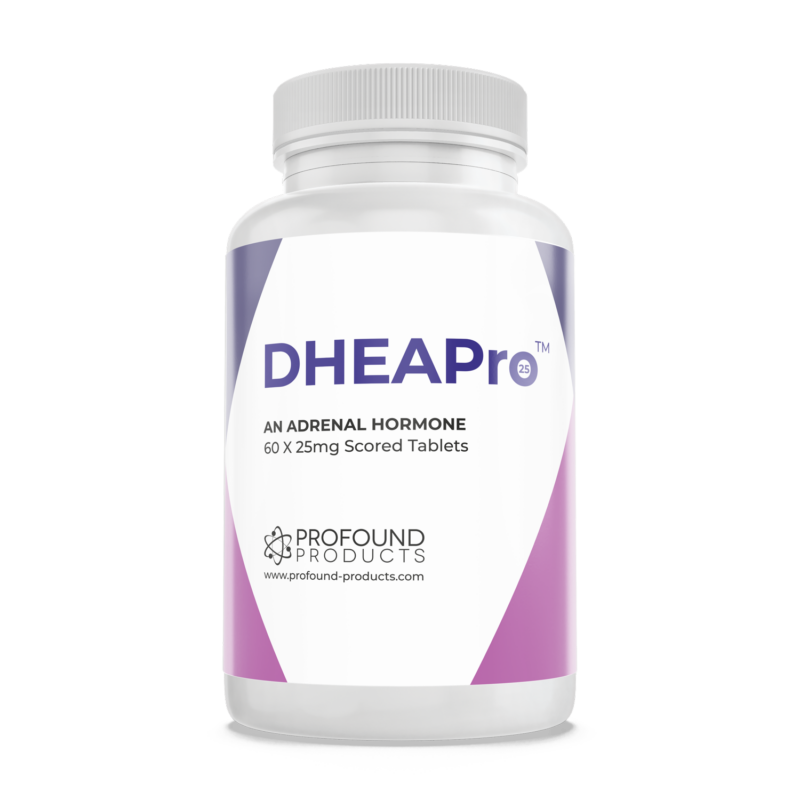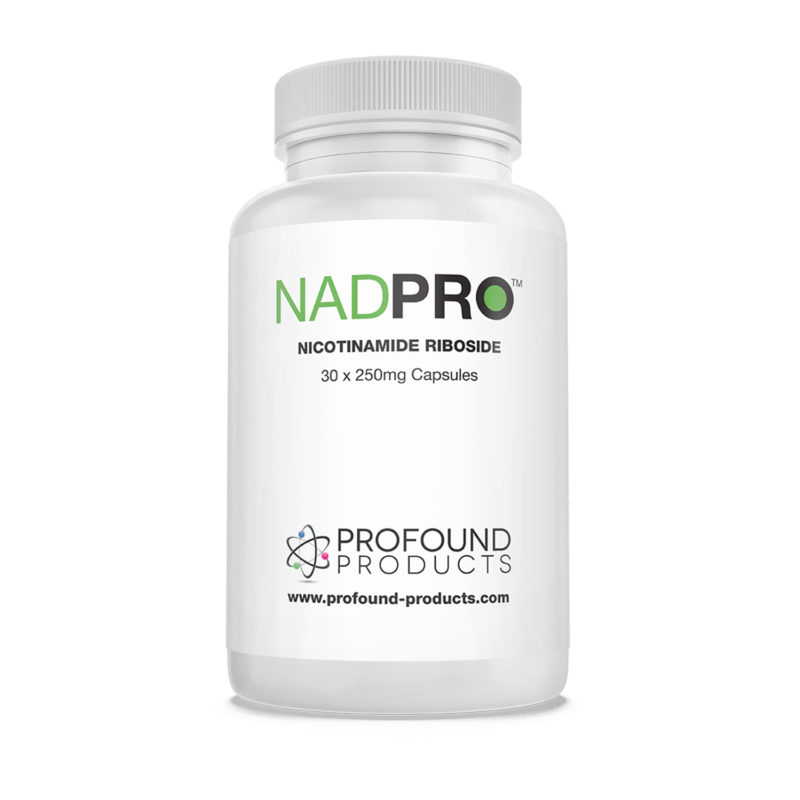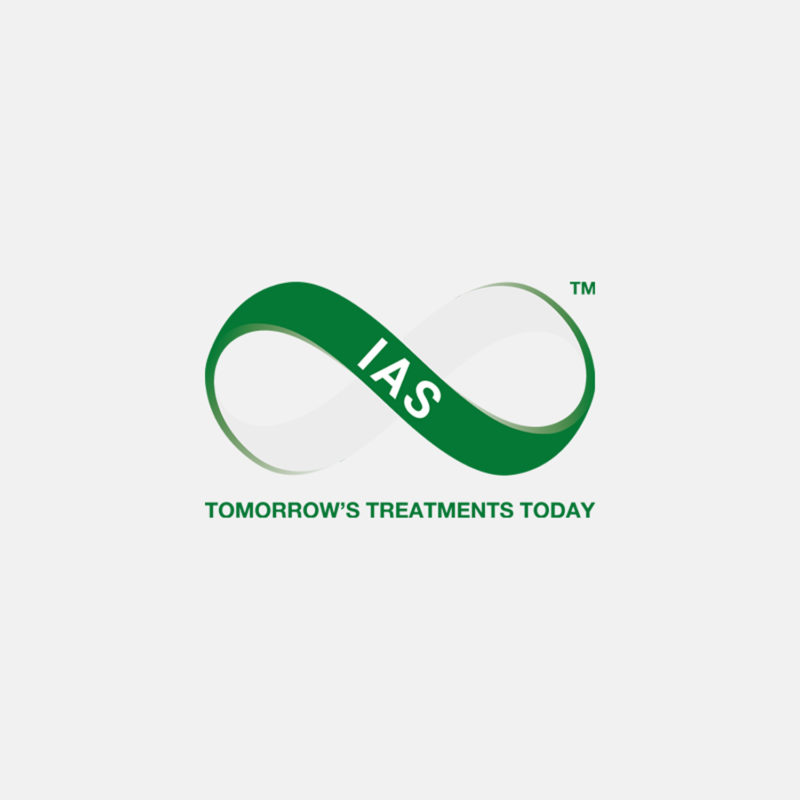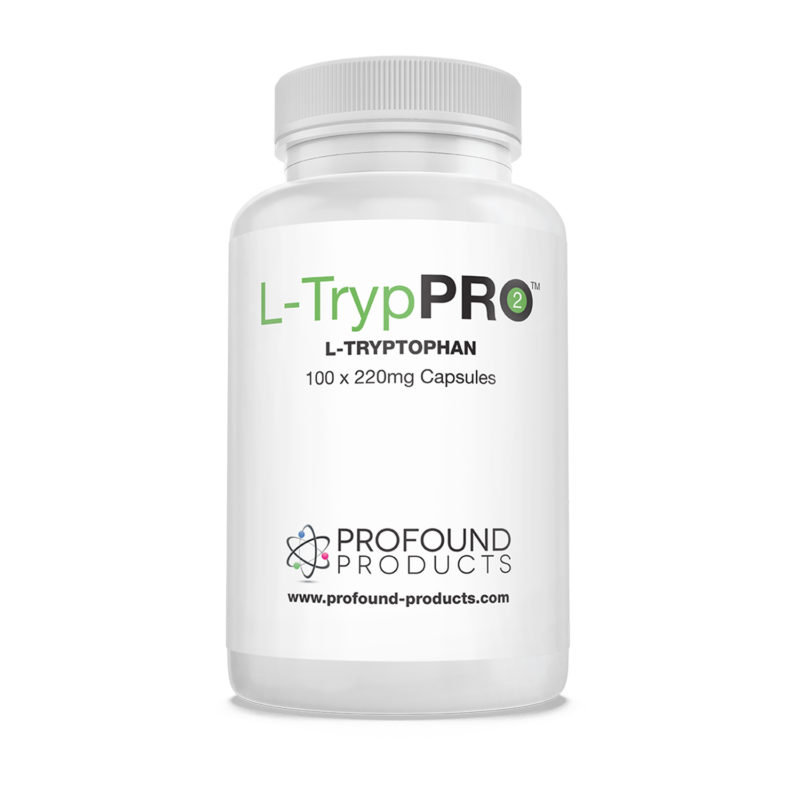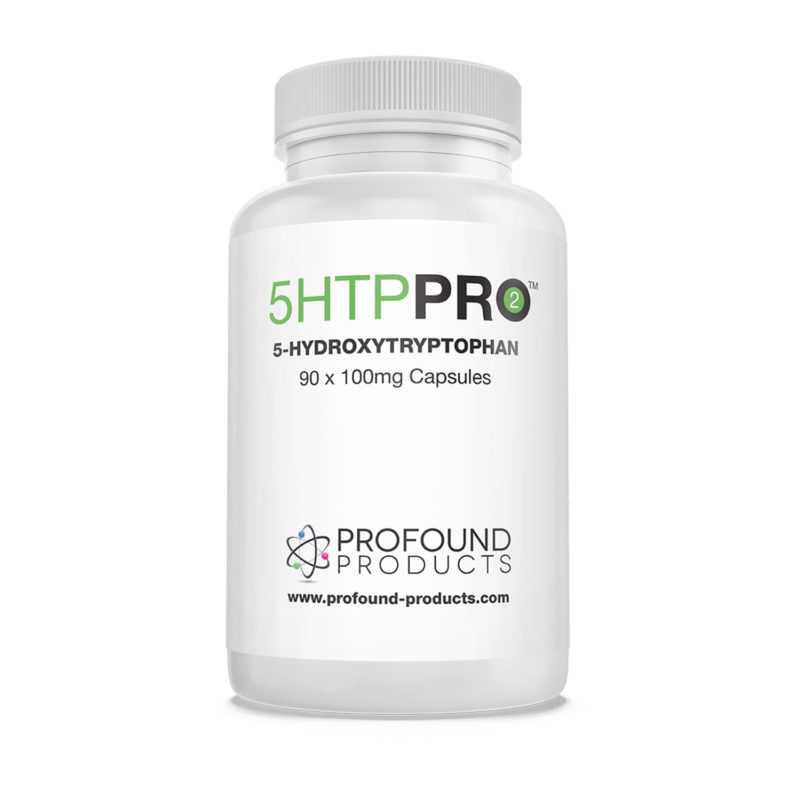Lifting Depression With “Bio-identical” Mood Enhancers
Depression affects millions worldwide, regardless of nationality, race, socio-economic status, age or gender. Insufficient activity of key neurotransmitters, such as the monoamines serotonin, norepinephrine, and dopamine, is the leading theory of depression held by neurobiologists today.
Yet despite the wide array of pharmaceuticals currently available — monoamine oxidase inhibitors (MAOI’s), tricyclic antidepressants (TCA’s), and selective serotonin reuptake inhibitors (SSRI’s) — depression remains difficult to treat. In fact, conventional antidepressants are ineffective in an estimated 10% to 30% of depression cases. (1) These so-called “xenobiotic” (foreign to the body) compounds also carry the risk of troublesome and potentially dangerous side effects and delayed onset of action. The good news is that a sizable body of clinical data has established the efficacy of certain physiologically occurring compounds in treating this disease.
Conventional drugs manipulate brain chemistry in a roundabout way because instead of boosting neurotransmitter synthesis, they increase synaptic serotonin levels by hindering usual enzymatic degradation (MAOI’s), or preventing customary re-uptake following nerve transmission (SSRI’s and TCA’s). “Bio-identical” agents (exact replicates of substances occurring naturally in the body), on the other hand, directly correct chemical deficiencies by providing raw materials that spark key metabolic processes leading to neurotransmitter production, thus restoring proper brain chemistry. In addition, they display a quicker onset of action, higher safety level (lower toxicity) and fewer side effects. This article describes a few of these neurotherapeutic substances clinically indicated to combat depression.
S-Adenosylmethionine (SAMe)
SAMe is a metabolite present in all living cells, formed from the amino acid methionine and adenosine triphosphate (ATP), the major energy source necessary for cellular reactions. Since its discovery in 1952, SAMe’s biochemical actions and therapeutic potential have been extensively investigated.
This amino acid derivative plays an integral role in three important mechanisms — as a methyl (CH3) donor in a broad array of cellular reactions involving proteins, phospholipids, DNA and neurotransmitter synthesis (3,4) and as a precursor molecule to both the aminopropylation (4,5) and transulfuration (4,6) pathways, leading to the production of polyamines and glutathione. In order for these pathways to function efficiently, an adequate physiological supply of SAMe is essential; illness and aging may deplete the body’s stores of this crucial biochemical.
Dozens of clinical studies performed since the 1970’s have demonstrated SAMe’s mood-lifting properties. When compared to conventional antidepressants, SAMe has been shown to be as effective as TCA’s (such as imipramine and chlorimipramine), with fewer side effects and faster onset of action. (4,7,8) When taken in combination with TCA’s, SAMe was shown to potentiate and hasten their effect. (8,9)
Perhaps it is the stimulatory effect of SAMe on monoamine neurotransmitters, or its role in phospholipid methylation, or both, which underlies its antidepressant effect.
In addition to relieving symptoms in otherwise healthy people, SAMe has also been shown to ease depression in those suffering from AIDS (10) and Parkinson’s (11). Besides depression, SAMe’s therapeutic value in treating Alzheimer’s (4), liver disease (4,12), and osteoarthritis (4,13) has been demonstrated.
SAMe is an unstable compound; however, stable salts (such as the butanedisulfonate and toluenesulfonate forms) have been developed. SAMe is available as enteric-coated tablets (and as an injectable), the dosage for tablets is typically 400 – 1600 mg daily in divided doses, on an empty stomach; if gastrointestinal problems occur, increase dosage slowly and take with food. Include a daily B-complex supplement or multi-vitamin with folic acid, B6 and B12
L-Tryptophan (LT)
LT is an amino acid precursor to serotonin, one of the monoamine neurotransmitters implicated in depression. Data suggest that lack of this essential amino acid in the diet can potentially cause or exacerbate depression in some people. (14, 15)
LT is present in foods in relatively small quantities and must compete with five other amino acids for entry into the brain via a transport molecule (i.e., a biochemical “vehicle” that “carries” amino acids across the blood-brain barrier). Getting adequate LT into the grey matter is a challenge, considering that as little as one percent of dietary LT may actually enter the brain (16). Although it is possible to increase LT levels through a carefully devised nutritional strategy, it would be extremely difficult, or nearly impossible, to reach or maintain adequate therapeutic levels (gram quantities) through diet alone.
Supplemental LT has been used since the 1970’s for its purported antidepressive effects. However, it’s difficult to draw firm conclusions on its efficacy due to the mixed outcomes punctuating the medical literature, which perhaps stem from poor or inconsistent study design. Even so, LT may be of therapeutic value for those with mild or moderate depression. (17)
It seems that more unequivocal results have been obtained when LT is used as an adjunct to conventional antidepressants. In one such study, when 20 mg of fluoxetine (Prozacâ) was administered with two grams of LT to a group of depressive patients over eight weeks, positive effects were seen sooner compared to a group that took fluoxetine and placebo. (Interestingly, slow wave sleep, which was decreased in the fluoxetine /placebo group, was maintained in the fluoxetine/LT patients.) (18)
In 1989, a single batch of tainted LT caused an epidemic of eosinophilia-myalgia syndrome (EMS), which resulted in its removal from the U.S. market by the FDA. The EMS-induced fatalities and illnesses were attributed not to any toxicity on the part of the supplement itself, but to contamination during the manufacture of this particular batch.
Dosage: One to three grams with a carbohydrate snack or on an empty stomach; do not consume with protein foods.
5-Hydroxytyptophan (5-HTP)
5-HTP, a metabolite of LT, is the immediate precursor to serotonin.* This amino acid analog is commercially produced by extraction from the seeds of the African plant, Griffonia simplicifolia. Unlike LT, 5-HTP easily crosses the blood-brain barrier — it does not require the presence of a transport molecule or compete with other amino acids to enter the brain. As much as 70% is absorbed into the bloodstream from an oral dose. (16)
Like LT, 5-HTP acts primarily by increasing levels of serotonin within the central nervous system, with the added benefit of augmenting levels of other neurochemicals too, including melatonin, dopamine, norepinephrine and beta-endorphin. (16)
Antidepressant effects and positive clinical outcomes appear to be more consistent with 5-HTP than with LT. (19, 20)
One author undertook the task of attempting to statistically analyze the results of 15 heterogeneous studies evaluating the efficacy of 5-HTP in depression, performed from 1972 to 1991. These investigations varied as far as type of depression, study design (open trial or double-blind vs. placebo), dosage, and duration of treatment, and thus were not suitable for a standard meta-analysis. Nonetheless, the researcher tallied the results and took a grand total: out of 511 patients, 285 showed improvement with 5-HTP (56%); when only the double-blind studies (8 out of the 15 studies) were considered, 94 out of 161 patients demonstrated amelioration of symptoms (58%). (16)
[*An interesting biochemical aside — serotonin can be subsequently metabolized to other products, including the sleep and circadian rhythm hormone, melatonin; a naturally occurring compound we discussed earlier, SAMe, is required for this conversion, underscoring its diverse physiological roles.]
When compared to conventional antidepressants, 5-HTP was shown to be as effective as the SSRI fluvoxamine (21) and the TCA imipramine, (22) with fewer side effects and a faster onset of action (within one to two weeks vs. four or more weeks) (23, 24). And, like LT, 5-HTP has been successfully used in conjunction with MAOI’s and TCA’s to enhance their therapeutic effect. (25, 26)
Medical experts differ over whether 5-HTP should be taken with a drug known as a decarboxylase inhibitor (such as carbidopa) to prevent the metabolism of 5-HTP to serotonin in the bloodstream before it reaches its target destination, the brain. Proponents of co-administration of carbidopa (27) argue that if the conversion takes place in the blood, negligible serotonin will enter the brain, due to the neurotransmitter’s limited access across the blood-brain barrier; others question the need for such an agent, pointing to successful clinical outcomes using 5-HTP alone (16).
Dosage: 50 to 100 mg, two times per day. Some people may experience mild nausea, so start with 50-mg doses, take with meals and increase slowly as needed.
Nicotinamide Adenine Dinucleotide (NADH)
NADH is the coenzyme, or active, form of Vitamin B3 (known as niacin, niacinamide, or nicotinic acid). It is a large and structurally complex molecule that exists both in its oxidized (NAD+) and reduced or electron-rich (NADH) form.
NAD+/NADH plays a critical role in each of the three major cellular energy pathways that generate ATP, the high-energy intermediate necessary to all cellular processes (which we discussed earlier in relation to SAMe). NADH is also involved in neurotransmitter production.
The name Birkmayer has long been associated with NADH — it belongs to two physicians of the Birkmayer Institute in Vienna, Austria who have performed groundbreaking research into the metabolic role of the B3 coenzyme in disease states, and have developed a patented stabilized form.
In several fascinating studies performed by the Birkmayers, successful outcomes were obtained by treating Parkinson’s patients with NADH. It was found that the patients’ reduction of symptoms was related to the coenzyme’s influence on endogenous dopamine production. (28, 29) (The synthesis of dopamine is impaired with the disease.) In the course of this research, the Birkmeyers observed another interesting phenomenon — the Parkinson’s patients’ improvement was also accompanied by a decline in disease-related depressive symptoms. This finding spurred the researchers to conduct further studies on NADH’s effect on various types of depression. In 205 patients treated with the coenzyme (administered orally, intramuscularly, or intravenously), 93% demonstrated improvement, establishing NADH as a neurotherapeutic agent with the “potential capacity to stimulate the biosynthesis of L-Dopa (a precursor to dopamine), dopamine and norepinephrine.” (30)
NADH has also been shown to be effective in treating such diverse conditions as Alzheimer’s (31), chronic fatigue syndrome (32), and even jet lag (33). The double role of NADH in the energy production pathways and neurotransmitter synthesis make it an intriguing subject of medical research and a novel and versatile therapeutic agent.
Dosage: A typical dose is 5-10 mg taken in the morning on an empty stomach (at least 30 minutes before breakfast); some people may find a larger dose of 10-20 mg more effective.
Conclusion
These effective, relatively non-toxic and naturally occurring raw materials for neurotransmitter production are an ideal first course of action in treating many (except the most severe) cases of depression. When necessary, they may also be used as adjuncts to conventional pharmaceuticals to enhance their action and speed their onset.
In the next article, we’ll cover a few more of these fascinating substances, including acetyl-l-carnitine, DHEA, omega-3 fatty acids and others.
References
1. Perret G, Hilleret H, Widmer JR, Bovier P. L-tryptophan plasma levels in treatment resistant depressive states. Rev Med Suisse Romande. 2000 Feb;120(2):153-7.
2. Turner EH, Loftis JM, Blackwell AD. Serotonin a la carte: supplementation with the serotonin precursor 5-hydroxytryptophan. Pharmacol Ther. 2006 Mar;109(3):325-38.
3. Lee ES, Charlton CG. 1-Methyl-4-phenyl-pyridinium increases S-adenosyl-L-methionine dependent phospholipid methylation. Pharmacol Biochem Behav. 2001 Sep;70(1):105-14.
4. Bottiglieri T. S-Adenosyl-L-methionine (SAMe): from the bench to the bedside —molecular basis of a pleiotrophic molecule. Am J Clin Nutr. 2002 Nov;76(5):1151S-7S.
5. Genedani S, Saltini S, Benelli A, Filaferro M, Bertolini A. Influence of SAMe on the modifications of brain polyamine levels in an animal model of depression. Neuroreport. 2001 Dec 21;12(18):3939-42.
6. Gigliozzi A, Romeo R, Fraioli F, et al. Effect of S-adenosyl-L-methionine and dilinoleoylphosphatidylcholine on liver lipid composition and ethanol hepatotoxicity in isolated perfused rat liver. Dig Dis Sci. 1998 Oct;43(10):2211-22.
7. Bressa GM. S-adenosyl-l-methionine (SAMe) as antidepressant: meta-analysis of clinical studies. Acta Neurol Scand Suppl. 1994;154:7-14.
8. Mischoulon D, Fava M. Role of S-adenosyl-L-methionine in the treatment of depression: a review of the evidence. Am J Clin Nutr. 2002 Nov;76(5):1158S-61S.
9. Berlanga C, Ortega-Soto HA, Ontiveros M, Senties H. Efficacy of S-adenosyl-L-methionine in speeding the onset of action of imipramine. Psychiatry Res. 1992 Dec;44(3):257-62.
10. Shippy RA, Mendez D, Jones K, Cergnul I, Karpiak SE. S-adenosylmethionine (SAM-e) for the treatment of depression in people living with HIV/AIDS. BMC Psychiatry. 2004 Nov 11;4:38.
11. Di Rocco A, Rogers JD, Brown R, Werner P, Bottiglieri T. S-Adenosyl-Methionine improves depression in patients with Parkinson’s disease in an open-label clinical trial. Mov Disord. 2000 Nov;15(6):1225-9.
12. Lieber CS. S-adenosyl-L-methionine: its role in the treatment of liver disorders. Am J Clin Nutr. 2002 Nov;76(5):1183S-7S.
13. Hardy ML, Coulter I, Morton SC, et al. S-adenosyl-L-methionine for treatment of depression, osteoarthritis, and liver disease. Evid Rep Technol Assess (Summ). 2003 Aug;(64):1-3.
14. Moreno FA, Gelenberg AJ, Heninger GR, et al. Tryptophan depletion and depressive vulnerability. Biol Psychiatry. 1999 Aug 15;46(4):498-505.
15. Booij L, van der Does AJ, Haffmans PM, Spinhoven P, McNally RJ. Acute tryptophan depletion as a model of depressive relapse: behavioral specificity and ethical considerations. Br J Psychiatry. 2005 Aug;187:148-54.
16. Birdsall TC. 5-Hydroxytryptophan: a clinically-effective serotonin precursor. Altern Med Rev. 1998 Aug;3(4):271-80.
17. Meyers S. Use of neurotransmitter precursors for treatment of depression. Altern Med Rev. 2000 Feb;5(1):64-71.
18. Levitan RD, Shen JH, Jindal R, Driver HS, Kennedy SH, Shapiro CM. Preliminary randomized double-blind placebo-controlled trial of tryptophan combined with fluoxetine to treat major depressive disorder: antidepressant and hypnotic effects. J Psychiatry Neurosci. 2000 Sep;25(4):337-46.
19. van Praag HM. Management of depression with serotonin precursors. Biol Psychiatry. 1981; 16: 291–310.
20. Byerley WF, Judd LL, Reimherr FW, Grosser BI. 5-Hydroxytryptophan: a review of its antidepressant efficacy and adverse effects. J Clin Psychopharmacol.1987; 7: 127–37.
21. Poldinger W, Calanchini B, Schwarz W. A functional-dimensional approach to depression: serotonin deficiency as a target syndrome in a comparison of 5-hydroxytryptophan and fluvoxamine. Psychopathology. 1991;24(2):53-81.
22. Angst J, Woggon B, Schoepf J. The treatment of depression with L-5-hydroxytryptophan versus imipramine. Results of two open and one double-blind study. Arch Psychiatr Nervenkr. 1977 Oct 11;224(2):175-86.
23. Takahashi S, Kondo H, Kato N. Effect of l-5-hydroxytryptophan on brain monoamine metabolism and evaluation of its clinical effect in depressed patients. J Psychiatr Res. 1975 Nov;12(3):177-87.
24. Nakajima T, Kudo Y, Kaneko Z. Clinical evaluation of 5-hydroxy-L-tryptophan as an antidepressant drug. Folia Psychiatr Neurol Jpn. 1978;32(2):223-30.
25. Alino JJ, Gutierrez JL, Iglesias ML. 5-Hydroxytryptophan (5-HTP) and a MAOI (nialamide) in the treatment of depressions: a double-blind controlled study. Int Pharmacopsychiatry. 1976; 11: 8–15.
26. Nardini M, De Stefano R, Iannuccelli M, Borghesi R, Battistini N. Treatment of depression with L-5-hydroxytryptophan combined with chlorimipramine, a double-blind study. Int J Clin Pharmacol Res. 1983; 3: 239–50.
27. Mendlewicz J, Youdim MB. Antidepressant potentiation of 5-hydroxytryptophan by L-deprenil in affective illness. J Affect Disord. 1980 Jun;2(2):137-46.
28. Birkmayer JG, Vrecko C, Volc D, Birkmayer W. Nicotinamide adenine dinucleotide (NADH) — a new therapeutic approach to Parkinson’s disease. Comparison of oral and parenteral application. Acta Neurol Scand Suppl. 1993;146:32-5.
29. Birkmayer GJ, Birkmayer W. Stimulation of endogenous L-dopa biosynthesis — a new principle for the therapy of Parkinson’s disease. The clinical effect of nicotinamide adenine dinucleotide (NADH) and nicotinamide adenine dinucleotidephosphate (NADPH). Acta Neurol Scand Suppl. 1989;126:183-7.
30. Birkmayer GJ, Birkmayer W. The coenzyme nicotinamide adenine dinucleotide (NADH) as biological anti-depressive agent. New Trends Clin Neuropharmacol. 1992; 6: 75-86.
31. Demarin V, Podobnik SS, Storga-Tomic D, Kay G. Treatment of Alzheimer’s disease with stabilized oral nicotinamide adenine dinucleotide: a randomized, double-blind study. Drugs Exp Clin Res. 2004;30(1):27-33.
32. Forsyth LM, Preuss HG, MacDowell AL, Chiazze L Jr, Birkmayer GD, Bellanti JA. Therapeutic effects of oral NADH on the symptoms of patients with chronic fatigue syndrome. Ann Allergy Asthma Immunol. 1999 Feb;82(2):185-91.
33. Birkmayer GD, Kay GG, Vurre E. Stabilized NADH (ENADA) improves jet lag-induced cognitive performance deficit. Wien Med Wochenschr. 2002;152(17-18):450-4.
Caution
If you are currently taking an antidepressant, do not stop or alter treatment without a physician’s supervision. The natural anti-depressants described here may interact with conventional drugs. If you are not taking medications and would like to try one of these supplements, it would be prudent to inform your physician, and then take one at a time for a course of four to eight weeks to determine its effect. Please note that S-adenosylmethionine, L-tryptophan and 5-hydroxtryptophan (and St. John’s Wort, which is a natural, but not bioidentical agent, and is not covered here) act on the serotinergic system, and if taken together could, potentially, dangerously elevate levels of the neurotransmitter (a condition known as serotonin syndrome, characterized by hypertension, flushing, dizziness, disorientation, and muscle twitching (2)). Dosages listed should be used as guidelines only; consult your health-care professional if you wish to exceed these recommendations.
Lifting Depression With “Bio-identical” Mood Enhancers (Part 2)
by Leslie J. Farer
In Part I of this article, we discussed the growing global incidence of depression and the often limited success of conventional drugs in treating it. Despite the ever-expanding pharmaceutical pipeline for antidepressant medications, with their various “new and improved” mechanisms of action, they are potentially toxic, side effect laden and ineffective in up to one third of those who take them. (1) Clearly, there is a need for therapies which provide symptom relief without compromising tolerability and safety. Fortunately, a sizable body of clinical research has demonstrated the efficacy of certain physiologically occurring (i.e., “bio-identical”) compounds in treating this disease by normalizing, rather than manipulating, brain chemistry. In addition, these carbon copies of biological substances display a faster onset of action, low toxicity and minimal side effects. Previously we covered SAMe, NADH, 5-HTP and l-tryptophan; here our discussion will focus on acetyl-l-carnitine, DHEA, and the omega-3 fatty acids.
Caution: If you are currently taking an antidepressant, do not stop or alter treatment without physician supervision. If you do not take medications and would like to try one of these supplements, it would be prudent to inform your physician, then take one at a time for a course of four to eight weeks to determine its effect. Dosages listed should be used as guidelines only; consult your health-care professional if you wish to exceed these recommendations.
Acetyl-l-carnitine (ALC)
ALC is the acetylated ester of the amino acid derivative l-carnitine. ALC has shown promise in treating an array of conditions, from Alzheimer’s, diabetic neuropathy, and the diminished cellular energy levels and mitochondrial dysfunction associated with aging, to cognitive impairment and depression. (2,3) Like l-carnitine, ALC shuttles long-chain fatty acids across the inner mitochondrial membrane where they undergo oxidation to produce energy in the form of ATP. What makes ALC unique is its specialized function of donating its acetyl moiety to the synthesis of biologically important compounds including acetyl coenzyme A, a key metabolic intermediate, and acetylcholine, a neurotransmitter involved in memory and learning. ALC easily crosses the blood-brain barrier (2,3) and has been shown to provide neuroprotective and neuroregenerative benefits. (2) ALC’s neurologic and energy generating mechanisms may underlie its reported antidepressive effects.
Research conducted in the late 1980’s and early 1990’s (4,5,6) demonstrated the efficacy and safety of ALC in treating depression in geriatric patients. In one study, administration of 1.5 g/day of ALC counteracted depressive symptoms in 28 patients aged 70 to 80. (5) In another, 60 senile patients, 60 to 80 years old, with dysthymia, a low-grade chronic form of depression, received either 3 g/day of ALC or placebo. ALC-treated patients experienced a significant reduction in symptoms and improvements in “quality of life” compared to those receiving placebo. (6)
A recent larger-scale study that was not restricted to older individuals compared ALC (1 g/day) to the conventional antipsychotic drug amisulpride (50 mg/day) in treating dysthymia in 204 subjects. Patients experienced similar symptom reduction on each regimen, leading researchers to conclude, “The greater tolerability of ALC is of clinical relevance considering the chronicity of dysthymia, which often requires prolonged treatment.” (7)
Dosage: 1 to 3 g daily, in divided doses.
Dehydroepiandrosterone (DHEA)
Most readers are familiar with the multi-faceted benefits of the hormone DHEA, and for many aspiring centenarians, it is a core ingredient in their daily anti-aging regimen.
DHEA and its sulfate metabolite, DHEA sulfate (DHEA-S), are the most plentiful circulating steroid hormones in the human body. (8) Produced primarily in the adrenal glands, DHEA also is considered a neurosteroid due to its synthesis in and action on the brain. Production peaks between 20 to 30 years of age, and then progressively declines with each successive decade. Between ages 50 to 60, DHEA levels have fallen to about 70% of peak values, (9) only to decline even further with advancing years. In fact, serum DHEA-S concentration is an accurate and useful biomarker of aging. Maintaining optimal, youthful DHEA and DHEA-S levels throughout life may be implicated in longevity.
Since the 1980’s several hundred studies have been published on DHEA’s health-promoting benefits, from anticancer, immune-enhancing, general antiaging and neurotropic effects, to treating adrenal insufficiency and alleviating depression. (10,11) Some researchers believe that epidemiological data support a direct relationship between DHEA and DHEA-S levels and positive mood, (11,12) although it may be that the ratio of DHEA (or DHEA-S) to the stress hormone cortisol is a more accurate indicator of emotional state (lower ratios due to decreased DHEA and increased cortisol are thought to correlate with low mood).
In what was reported to be the first demonstration of the effects of DHEA replacement on aging men and women, 30 subjects between the ages of 40 and 70 were administered 50 mg/day of DHEA in a 3 month placebo-controlled trial. In the treated group, the restoration of DHEA and DHEA-S serum levels to those of a young adult was accompanied by an increase in “physical and psychological well-being” in about three quarters of study subjects. (13) This marked effect on demeanor opened the door to other research that would specifically elucidate the role of DHEA in depression.
In 1999, the first double-blind placebo-controlled trial evaluated DHEA as an individual or adjunct treatment in major depression. 22 patients aged 33 to 53, who were either medication-free or on a stabilized dose of a conventional drug, received graduated doses of up to 90 mg/day of DHEA or placebo. The goal of the researchers was to restore DHEA and DHEA-S serum levels to the high end of the physiological range of a 20 to 30 year-old adult. After 6 weeks, half of the DHEA-treated participants (compared with none of the placebo group) experienced at least a 50% decrease in depressive symptoms — an impressive result considering that many of the patients did not respond adequately to conventional antidepressants alone. (11) In a 2005 study, researchers at the National Institute of Mental Health investigated the use of DHEA as a monotherapy in treating a common symptom of aging: mid-life onset depression. 46 medication-free patients between the ages of 45 and 65 received either DHEA (90 mg/day for 3 weeks followed by 450 mg/day for 3 weeks) or placebo. At the end of 6 weeks, a pronounced improvement (50% or greater) in mood rating scales was observed in half of the DHEA-supplemented patients, (14) confirming the outcome of the 1999 study. No additional benefit was observed with the higher 450-mg dose. (Note: The researchers did not present the patients’ serum DHEA and DHEA-S concentrations, which likely reached supra–physiological levels on the higher dose.)
The latest research indicates that DHEA may also benefit the depression that often accompanies, and is secondary to, HIV/AIDS. In an 8-week study, 60% of patients receiving DHEA (100 to 400 mg/day) showed mood improvement, compared with 30% of those receiving placebo. (15)
Just how does DHEA exert its antidepressant action? In part, by metabolism to testosterone and estrogen, both of which may have mood-enhancing effects of their own. (10,11) Also, as mentioned earlier, elevated cortisol and lowered DHEA are implicated in psychiatric and physical diseases, and supplementary DHEA may help restore a more healthy balance between the two hormones. (10,16) In addition, DHEA crosses the blood-brain barrier (10) and is thought to effect GABA, N-methyl-D-aspartic acid, and sigma receptors, as well as serotonin levels. (11)
Caution: DHEA may potentially be metabolized to testosterone and/or estrogen and should be avoided in those with hormone-sensitive tumors (i.e., of the breast, cervix, uterus, or prostate).
Dosage: Optimal dosage varies widely between individuals. A baseline DHEA-S blood test should be performed to determine a suitable starting dose (usually between 10 to 50 mg). Repeat the DHEA-S blood test 3 to 6 weeks after beginning DHEA supplementation and adjust dosage as necessary. Periodic blood monitoring will ensure that your DHEA-S level is within the optimal range for a young adult. Physician supervision is advised.
Omega-3 Fatty Acids
The role of omega-3 fatty acids in promoting cardiovascular health has been well established and emerging research is demonstrating their importance to mental health as well.
Omega-3’s are a subset of the family of essential fatty acids (EFA’s), long- chain polyunsaturated acids derived from marine and vegetable sources. EFA’s are classified as “essential” because they cannot be synthesized in the body and must be obtained from the diet. Important omega-3’s are the parent compound, alpha- linolenic acid (ALA), and its metabolites, eicosapentaenoic acid (EPA) and docosahexaenoic acid (DHA); they play a critical role in the development and function of the central nervous system. EPA and DHA are derived from cold water oily fish such as salmon, herring and mackerel, and ALA is found in plant sources, including flaxseed, hemp, canola, and walnut oils. (ALA can be metabolized to the longer-chain EPA and DHA, but only to a limited degree — 5 to 15%. (17))
Another group of EFA’s are the omega-6 fatty acids, found in the healthful source evening primrose oil, as well as in less desirable vegetable oils, such as corn and sunflower oils, present in processed foods. Both omega-3 and omega-6 fatty acids are essential; however, metabolites of the omega-6 group are significantly more inflammatory than those of omega-3 (18) and may lead to negative health consequences. Researchers postulate that the dramatic decline in the dietary intake of omega-3’s and the escalating consumption of omega-6’s in the Western world may be at the root of the corresponding rise in psychiatric disorders in the past century! (17, 19) This trend of increasing incidence of depression is not seen in populations with higher rates of fish consumption. (17, 18)
Considering that lipids comprise 60% (17, 18) to 80% (19) of the solid mass of the brain and that more than one third of these lipids are omega-3 fatty acids, (20) one can appreciate their absolute importance to the proper structure and function of the brain. Omega-3’s are a fundamental component of the phospholipid chains making up neuronal membranes; (17, 18, 19) they ensure the fluidity required for optimal neurotransmitter function and cell signaling systems. If unavailable, omega-3’s will be replaced by non-EFA’s, (19) changing the very structure of the phospholipid chains, potentially impeding receptor and neurotransmitter function and negatively impacting mental health. In addition to providing neuronal membrane integrity, omega-3’s inhibit inflammatory immune chemicals (cytokines) implicated in depression, (18) promote adequate blood flow to the brain, (21) and ensure production of the neuro-chemical phosphatidylserine which displays mood-lifting properties of its own. (22)
In one of the first double-blind placebo-controlled studies evaluating omega-3’s as an adjunct treatment for depression, 30 patients with bipolar disorder received either 9.6 g of omega-3 fatty acids per day (6.2 g EPA plus 3.4 g DHA) or placebo (olive oil) in addition to antidepressant medication for 4 months. The omega-3 group experienced considerable symptom improvement with a longer period of remission than the placebo group. (23) In fact, the positive outcome was so pronounced that the study was terminated so that the placebo group could begin omega-3 supplementation.
More recent research has focused on a purified ethyl ester analog of EPA used in conjunction with standard medication. In one trial, 70 patients with persistent depression despite conventional drug therapy received either placebo or ethyl-EPA (1, 2, or 4 g/day) for 12 weeks. Surprisingly, the group receiving the lowest dose of ethyl-EPA, 1 g/day, experienced the greatest improvement in depression, anxiety and sleep disturbances compared with the higher dose or placebo groups. (24) In two related studies, however, a higher dose of ethyl-EPA co-administered with standard medication did result in significant symptom reduction. In one, 1 g/ day of ethyl-EPA was as effective as 2 g in treating bipolar depression in 75 patients. (25) In another, administration of 2 g/day of ethyl-EPA resulted in marked improv
